More than 100 high-caliber graduation projects from 7 institutions including Huazhong University of Science and Technology, Hubei University and Jianghan University, were showcased in Wanlin Art Museum from May 15thto 30th. Organized by the School of Urban Design, the exhibition aimed to give visibility to the efforts of graduating students this year. All the creative graduating seniors who have a knack for inventing and designing were given an opportunity to put their ideas to work and build tangible models. They were free to hand in their projects independently or in collaboration with other students.
The opening ceremony, hosted on May 22th, was attended by Vice President Shu Hongbing and was soon followed by an open-ended seminar on teaching experiences and understanding of innovative design and awards for the outstanding works. The works were broadly classified into four main categories, namely product design, environmental design, visual communication design, and digital media design. The styles and concepts of these categories were aesthetically different, and they were displayed in separate compartments, fully justifying the exhibition’s theme “harmonious yet different”.
Under product design, many innovative yet practical products such as the multi-functional integrated medical bed, child care robot, modular anti-smog mask, protection cap for epilepsy patients, kitchenware for elderly, banner production system, battery vending and recycling machine and solar aerator,were exhibited. Unique uses of materials, patterns and colors in the rattan and braided furniture rendered an artistic and textured look.
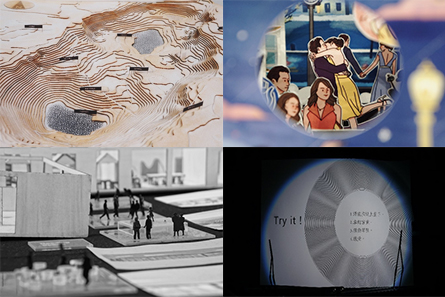
Snapshots of some amazing silhouettes and visual arts
Several elegantly pieced architectural models for geological museums, tourist resorts, smart homes, heritage parks, terminals, modern cemeteries and co-working spaces caught the attention of visitors. The fiberglass and cardboard models were fitted with LED lights to enhance their beauty and the walls were filled with detailed illustrations and structural analysis of the designs. Some of the rebuilding projects were inspired by ancient Chinese culture and used traditional building materials like bamboo.
Students utilized playful designs to conduct character-centric brand integration through packaging and illustrator sets. Several items such as paper cutouts, statuette, pop-up books, postcards, cushions, neon lights, badges and ring-bound notebooks and elaborate designs for logos, mouse pads and sugar painting showed their top-notch craftsmanship and designing skills. They leveraged their computing skills to build apps for kids as well as developed city visualization system, tourism website and augmented reality art. Several engaging animated short films titled "Assassin", "Heart", “Alice”, "Ball" and “Lady Bird” were screened at the exhibition.
Those promising designs and architectural models were the product of sheer hard work, tenacity and dedication of graduating students and tutors alike. The visitors were fascinated by the novelty of the projects, which stood as a testament to the high-achieving culture in WHU and other schools in Wuhan. The common thread running through all the collections is innovation. Other than that, utility, fineness and bankability were some salient features of the displayed works, which represents the overall creative portfolio of the graduating students.
Below are some flagship WHU projects at the exhibition and their design concepts
Renault k-5
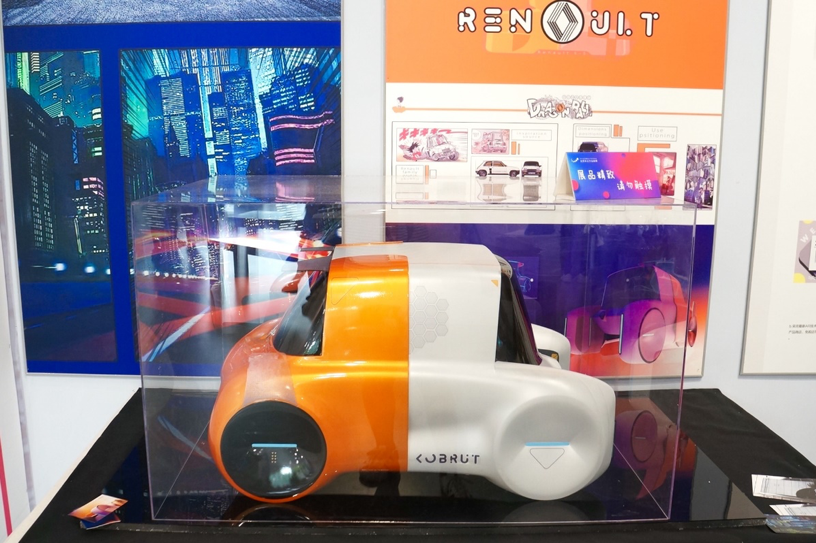
I thought of this model because I found the urban traffic conditions in China to be troublesome. Owing to China’s large population base, traffic jams, scarcity of parking spaces, environmental pollution, and driving accidents are inevitable. I think that drones can solve the problem of traffic accidents, reduce the difficulty in driving and increase traffic safety. An improved public transportation can relieve pressure on the environment and reduce the number of private cars. My prototype was based on a vehicle from the famous Japanese comic “Dragon Ball”. The prototype of the caricature—Renault 5 turbo—was released in 1979 and it represents Renault's classic models. The original processing design was adapted into the comic book. The size of the car is very small which is in accord with the vision of a future means of transport. However, I did make some changes to the initial prototype in the comic, combining the core concepts of Renault with the compact new energy driverless shared car that I designed. It took me around five months to design the initial draft, 3D-print the model and paint the finished model.
Designer: Zhou Jinzheng
AR based smart shopping

I actually started working on this intelligent shopping project based on AR technology two years ago and I collaborated with a classmate to complete it. Foreigners do not understand commodity information when they come to China, and Chinese people feel the same when they go abroad. I designed this application to solve the problems caused by differences in language and culture so as to enhance people’s shopping experience. After wearing these glasses, the user can start shopping by selecting the language he or she understands in the glass interface. When the product of interest is held in hand, the three-dimensional appearance of the product can be scanned, and then the details are displayed in the selected language. This application has multiple language choices, shopping area map navigation, and other functions.
Designer: Nie Menglin
WearingOdor
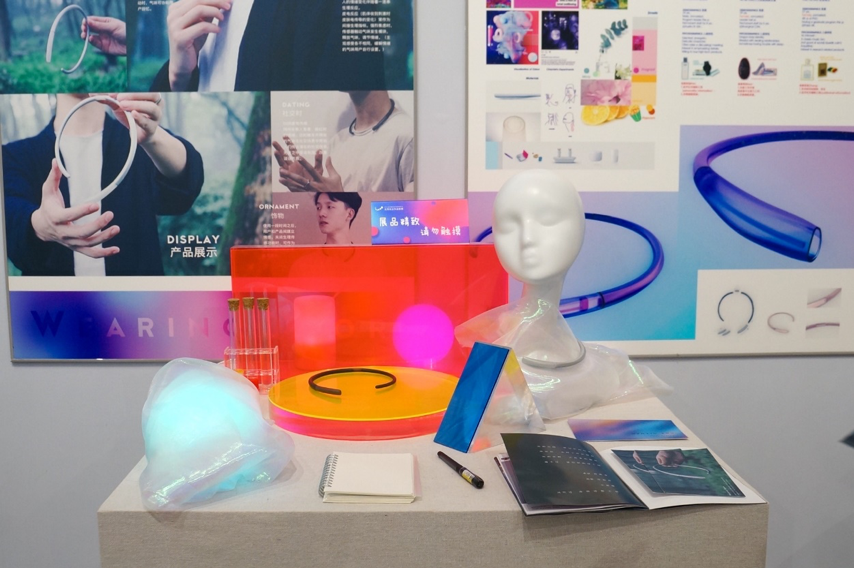
Earlier this year, when I was clearing my luggage after travel, I discovered the fact that smell is related to memory. Then I started designing a product along this line of thought. During a chat with a life sciences student, she told me that smell could store memory and provided me a lot of academic inspiration and help. I completed the project in less than three months. The primary function of the product is to improve mood and promote the formation of more profound memories. The product has applications in many disciplines such as awareness, cognitive science, material and computer science. A lot of people think of design science as visual arts and drawings. In fact, design science students look at each discipline from a macro and bystander perspective to find one or more points of interest to delve into and combine them into what they believe to be innovative. My last four years in WHU has been enriched and I have realized that the non-utilitarian side of general education is essential to rethink traditional natural sciences from a different perspective.
Designer: Zou Wenyin
Sea
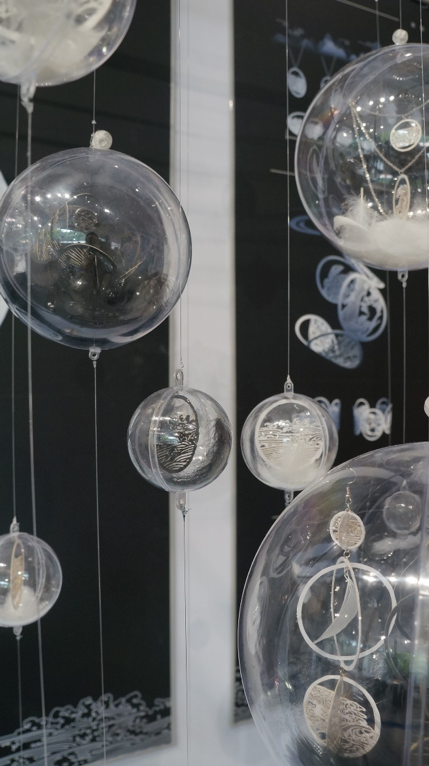
My jewelry design themed “Sea" uses non-traditional jewelry materials such as paper and resin along with clouds, feathers, waves and other elements. These elements are simplified and linearized. Through the incisive manufacturing craft and characteristics of the paper itself, I was able to paint a picture of the magnificent sky. The skies are connected. A feather floats in the air but there is no shadow of the seagull. Only the undulating ears are left behind with silent sea waves. It conveyed a kind of fragile tranquility that could be broken by a single touch. It seems like a figment of the imagination, stating that even in the busiest cities, there is a longing for the pure silence of the sea in our hearts. When I was making jewelry for the first time, I liked the craftsmanship. This is the first time my work has been put on display. So, I wanted to use new materials to bring a new vibe to my creation and everything from selection, design, and display are totally brand-new concepts. While working on the project, I needed space and clarity, and the theme of sea brought me much needed inner peace.
Designer: Zhang Mengjie
Red Reactor

My design project is to transform an old factory into a co-working space, which is divided into exterior and interior design. The key word in design is sharing, and the idea of design is to create a reactor space that allows thinking and ideas to collide and exchange. In this design, we explored the sustainability of the renovation of old factories, retained the original materials such as red bricks, and reorganized them into a new modern office space. I made a building model with wood laminates, PVC boards, and acrylic boards in order to make the design content more intuitive and clear. I am grateful to my teacher, Mr. Lu Hong, for her guidance and encouragement for me to successfully complete my graduation project.
Designer: Li Qianyu
Monster Seat
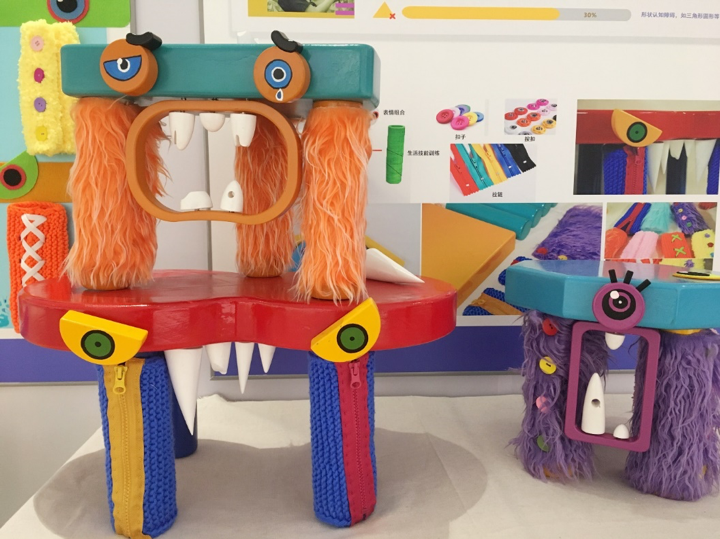
Photo by Li Zhaorui
Children with autism seem to have lost their child-like attributes. The normal development of interests, joy, and hobbies seem to be missed by these children. When they are educated alongside ordinary children, they are not intrigued by hobbies normal kids indulge in and do not cooperate. Excluding children with autism, autistic individuals are considered to be a class of patients. Because of their communication and expression barriers, they are rarely able to express their wishes. However, there are two processes for improving their skills—directional correction and mechanical training. Most cognitive toys are boring which often unleashes children’s rebellious psychology in the training process. Therefore, in this design, I chose to use children's instincts as the starting point of design-transforming children’s cognitive toys from two-dimensional to three-dimensional and intervening the treatment process with stories and games. The toy is based on a stool in order to stimulate children's desire to learn. Children with autism can use facial expressions on the stools to wear different kinds of clothes, thus enhancing their ability to recognize facial expressions and learn basic life skills.
Designer: Li Zhaorui
(Photo by: Shen Pingbingqing)
(Edited by: Jessica Wang, Edmund Wai Man Lai, Liu Jiachen and Liu Xiaoli)